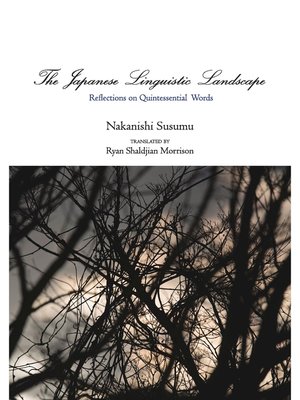
Sign up to save your library
With an OverDrive account, you can save your favorite libraries for at-a-glance information about availability. Find out more about OverDrive accounts.
Find this title in Libby, the library reading app by OverDrive.



Search for a digital library with this title
Title found at these libraries:
| Library Name | Distance |
|---|---|
| Loading... |
※この商品はタブレットなど大きいディスプレイを備えた端末で読むことに適しています。また、文字だけを拡大することや、文字列のハイライト、検索、辞書の参照、引用などの機能が使用できません。
Languages change over time. No matter how hard we try to control and regulate them, they exist in a state of endless metamorphosis. This does not mean, though, that we should simply stand by and watch as language devolves into nonsense.
What should we do, then? Recognizing the inevitability of change is a given, of course. But we must also navigate the delicate line between the pull of popular trends and the urge to cling blindly to the ways of the past. The ideal balance, Professor Nakanishi argues in this book, lies in being "one step behind the times," which is the best approach for wielding all the charms of a language.
Beautiful words have an ageless quality, regardless of when they first appeared in a language. The Japanese language testifies to that truth. This book introduces a balanced mix of new and old words that reflect the singular beauty of the Japanese language.
The beautiful words of the Japanese language are not—as some people say—simply old, antiquated terms. Discerning beauty in a language requires more than having an antiquarian's ear; it requires certain sensibilities and sensitivities. Only by submerging ourselves in a language can we perceive its splendid subtleties, and appreciate its true beauty.
This book offers readers an opportunity to delve into to those nuances of Japanese, explore the language's history, and savor its unique beauty.
Languages change over time. No matter how hard we try to control and regulate them, they exist in a state of endless metamorphosis. This does not mean, though, that we should simply stand by and watch as language devolves into nonsense.
What should we do, then? Recognizing the inevitability of change is a given, of course. But we must also navigate the delicate line between the pull of popular trends and the urge to cling blindly to the ways of the past. The ideal balance, Professor Nakanishi argues in this book, lies in being "one step behind the times," which is the best approach for wielding all the charms of a language.
Beautiful words have an ageless quality, regardless of when they first appeared in a language. The Japanese language testifies to that truth. This book introduces a balanced mix of new and old words that reflect the singular beauty of the Japanese language.
The beautiful words of the Japanese language are not—as some people say—simply old, antiquated terms. Discerning beauty in a language requires more than having an antiquarian's ear; it requires certain sensibilities and sensitivities. Only by submerging ourselves in a language can we perceive its splendid subtleties, and appreciate its true beauty.
This book offers readers an opportunity to delve into to those nuances of Japanese, explore the language's history, and savor its unique beauty.







